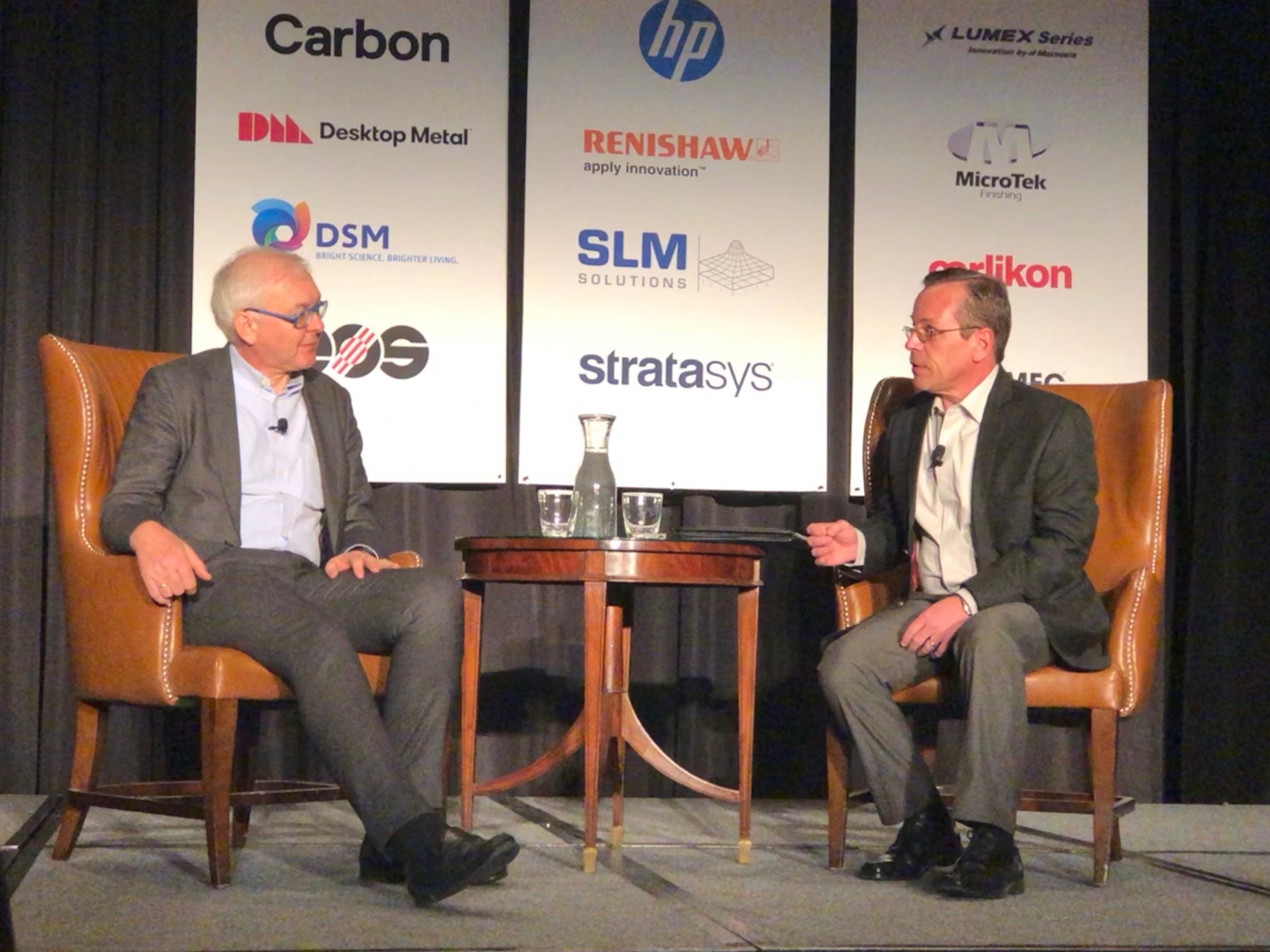Reality has set in about 3D printing/additive manufacturing, and that’s a good thing.
“I feel we are reaching an age where all [additive manufacturing] expectations and conversations are much more balanced, much more practical, much more pragmatic,” said Consultant and AMUG Adviser Todd Grimm in his Additive Manufacturing Users Group (AMUG) keynote on April 9. “I firmly believe that that is a powerful thing for us. Make it real instead of this big lofty dream, this goal that is just hanging out there. Instead of making these bold promises of revolution and disruption—driving people by pure emotion, out of fear or out of hope and desire, asking them to take a leap of faith—we are providing paths ...”
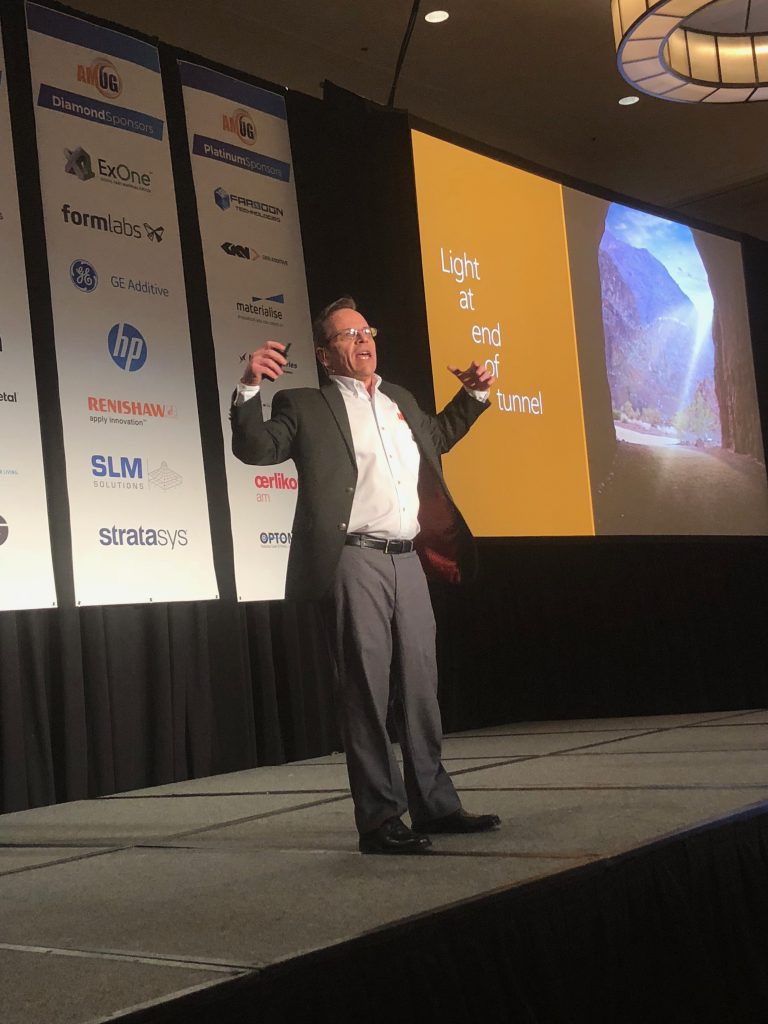
Todd Grimm, founder and president of T. A. Grimm & Associates, Inc., addresses AMUG members.
At this year’s AMUG Conference April 8-12 in St. Louis, MO, those paths took the form product demonstrations, presentations and networking opportunities. AMUG celebrated its 30th anniversary this year, with a nod to its origins as the 3D Systems North American Stereolithography Users Group. Its members now include owners and operators of all types of additive manufacturing technology. A look at AMUG’s recent growth—from 262 attendees in 2012 to 1700+ attendees this year—provides a snapshot of the kind of growth the 3d printing/additive manufacturing industry has experienced.
The Missing Middle
On of the most obvious examples of additive manufacturing getting down to business was the number of products and announcements aimed at mid-sized businesses. For years, there were a mind-boggling number of 3D printers aimed at consumers, hobbyists and small business owners who wanted to experiment with 3D printing. On the high-end, there were plenty of choices for metal additive manufacturing systems, albeit with price tags that put them out of reach for many mid-sized businesses. In the middle, the options were more limited, especially if you wanted to venture outside the realm of polymers.At AMUG, in addition to the fused-filament printers that had been filling the medium-sized business void, a number of vendors showcased machines and materials aimed at bringing medium-sized additive manufacturing along for the ride.
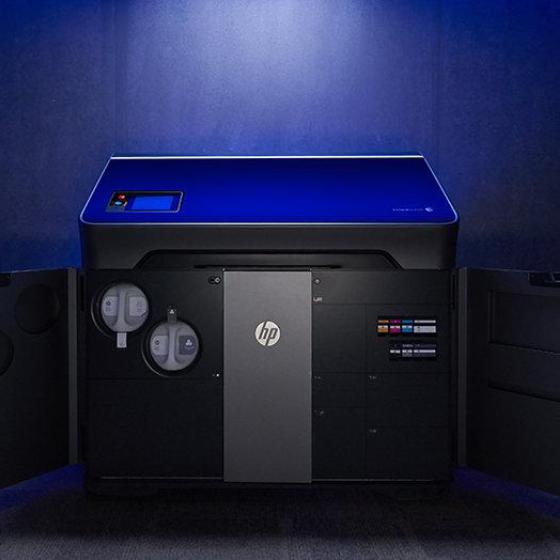 The new Jet Fusion 300 / 500 series complements HP’s existing industrial-grade Jet Fusion 3200/4200/4210 3D solutions. Image courtesy of HP.
The new Jet Fusion 300 / 500 series complements HP’s existing industrial-grade Jet Fusion 3200/4200/4210 3D solutions. Image courtesy of HP.HP markets its new Jet Fusion 580/380 Color and 540/340 3D printers as “the cost-effective HP 3D printers tailored for small/medium-sized product development teams, design firms, and universities.” At AMUG, David Tucker, HP’s 3D Print Market Development Manager, said the printers “allow designers to iterate on a platform that can scale into production” because they use the same technology as HP’s larger 4210 and 4200 3D printing solutions. Depending on configuration, the new series start in the $50,000s. Learn more here.
Essentium also made a point of its scalability and affordability in closed-door meetings that discussed its FlashFuse process that works hand-in-hand with filament-fusion systems. FlashFuse enhances the strength of parts made on fused filament fabrication (FFF) 3D printers, specifically addressing the universal problem of weakness in Z-strength behavior. Learn more about FlashFuse here. The company is partnering with BASF and expects to release about five materials per quarter.
But the company also provided additional details of its High-Speed Extrusion (HSE) platform that it expects to release in the fourth quarter this year.
“It’s built from scratch,” said Erik Gjovik, co-founder and chief product officer of Essentium. “We have a machine that is 10x faster than the competition and can scale. It’s high-speed extrusion.” Initially aimed at the fixtures market, Gjovik said the HSE will start at $55,000, placing it well below the price of many industrial 3D printing systems. Options that increase that price will be the inclusion of FlashFuse technology and multiple print heads.
“It’s a no-compromise solution that offers speed and strength,” adding that HSE’s speed and quality will allow it to be used for end-use production. HSE will be formally released in September at the International Manufacturing Technology Show (IMTS).
Not to be left in the dust when it comes to speed, Stratasys announced a 3D printing technology it says is up to 50X faster than existing high-speed sintering additive manufacturing solutions—fast enough to compete with injection molding. The Selective Thermoplastic Electrophotographic Process (STEP) technology has been incubating for 10 years, but now Stratasys has formed Evolve Additive Solutions to bring the technology to market. According to Stratasys, the STEP process combines 2D imaging technology with intellectual property developed by Evolve to align incoming layers and bonding techniques that create final parts that are fully dense with isotropic properties of injection molding. Learn more here.
Panelist from Siemens PLM Software, Johnson & Johnson, Ford, FedEx and Boeing join the Stratasys additive manufacturing panel at #amug2018 #3dprinting pic.twitter.com/1k8eqYsfZq
— Digital Engineering (@DEeditor) April 10, 2018
Stratasys is also moving into metal with its spin-off of Vulcan Labs to focus on powder-bed fusion innovation. In 2014, Stratasys acquired service bureau Harvest Technologies. The new Vulcan Labs’ management team includes David K. Leigh, an original founder and CEO of Harvest Technologies. Learn more here.
Other metal additive manufacturing news was made by Desktop Metal, which demonstrated its Studio System. The system includes software, the printer, a debinder and a furnace. The Desktop Metal Studio printer extrudes material from metal rods—similar to fused-filament 3D printing—and is held together via wax and polymer binders. Because it doesn’t use powders or lasers, it eliminates the safety requirements often associated with metal 3D printing, which the company says also makes it 10x cheaper than laser-based systems. The system is expected to sell for $120,000, and additional printers can be added for $49,900. After extrusion, parts are immersed to remove the binding agent and then heated in the furnace. The company has received $277 million in investments in financing to date to develop and commercialize the process, including software needed to allow for controlled part shrinkage during heating that could otherwise affect accuracy. Learn more here.
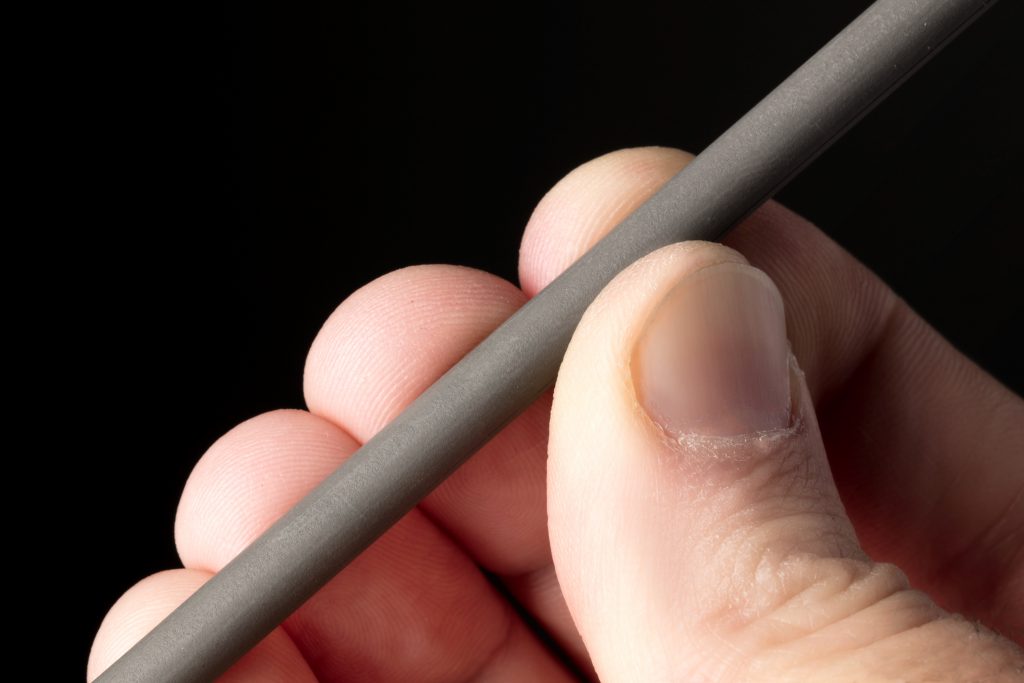 Layer by layer, Desktop Metal’s Studio shapes a green part by extruding bound metal rods—metal powder held together by wax and polymer binder—in a process the company calls Bound Metal Deposition. Image courtesy of Desktop Metal.
Layer by layer, Desktop Metal’s Studio shapes a green part by extruding bound metal rods—metal powder held together by wax and polymer binder—in a process the company calls Bound Metal Deposition. Image courtesy of Desktop Metal.Partnerships Abound
As we reported on in our April cover story, “Partnering on Design for Additive Manufacturing,” and companion piece “The Rise of Design Software for 3D Printing,“hardware and software companies are working together to advance additive manufacturing technology. Even more broadly, partnerships among 3D printing technology and material providers and end users are key to the future of additive manufacturing.In his keynote, “The Key to the Digital Factories of the Future: Collaborative Product Partnerships,” Carbon Founder and CEO Joseph DeSimone, explained how the company is working with manufacturers, such as Adidas, to scale up manufacturing.
“We have this really deep partnership with Adidas and other companies for production,” DeSimone said in an interview with DE. “The Adidas machine was designed just for them. We’re seeing first-hand all the problems faced by manufacturers and we get a chance to solve those problems with software solutions.”
Famous for his TED Talk, “What if 3D Printing was 100x Faster?” that introduced the company, DeSimone is seen as an industry visionary. Read more of our discussion here.
Another industry luminary, Fried Vancraen, founder and CEO of Materialise, was presented with AMUG’s Innovators Award at the conference. Vancraen sat down with Todd Grimm on stage to discuss the early days of 3D printing, the origins of Materialise’s passion for integrating additive manufacturing in healthcare, and its expansion into many different industries.
Materialise began in 1990 as a partnership with the University of Leuven. Vancraen said part of original business plan was to build human anatomy via 3D printing, but began developing software out of “pure necessity” when “triangles went everywhere” during CAD-to-STL file transfers and models couldn’t be easily sliced into layers.
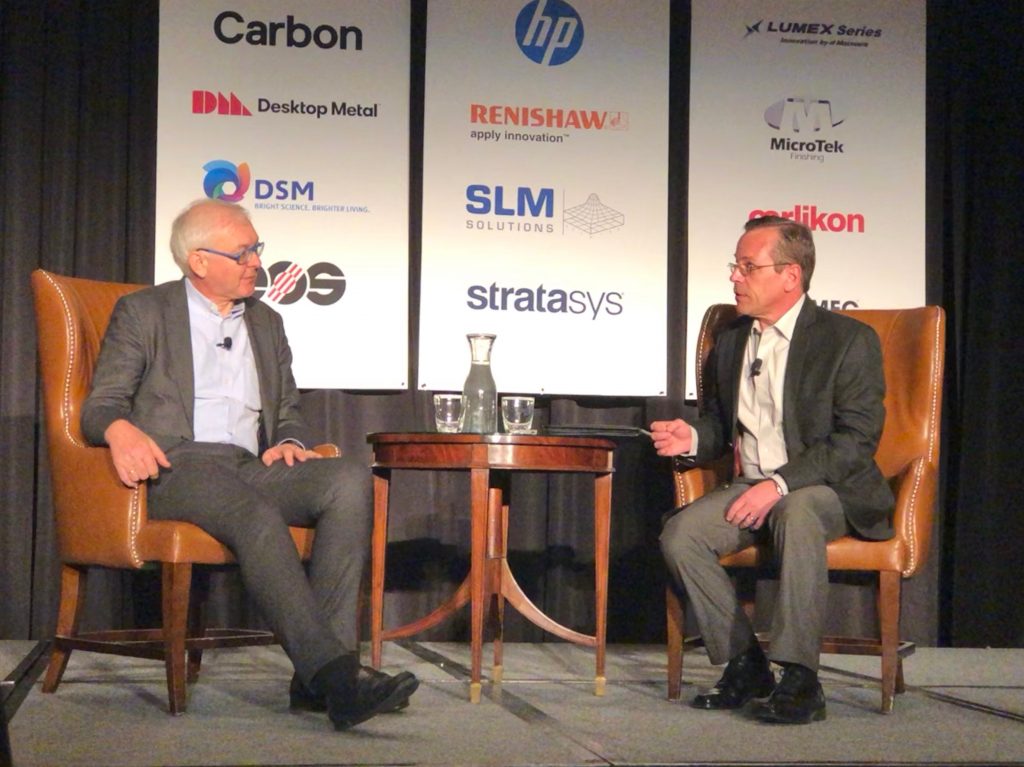 Materialise Co-Founder and CEO Wilfried Vancraen chats with Todd Grimm on stage at AMUG 2018.
Materialise Co-Founder and CEO Wilfried Vancraen chats with Todd Grimm on stage at AMUG 2018.“We want to use our know-how in AM to contribute to a better and healthier world,” Vancraen said during the AMUG discussion. “So many products are so much better than they were thanks to 3D printing, rapid prototyping and additive manufacturing. We’re happy and proud to contribute to your work via our software.”
Read about how Materialise used 3D printing to help wounded civilians during the Iraq War here.
Read more coverage of 3D printing/additive manufacturing here.
About the Author
Follow Robotics 24/7 on Linkedin
Article topics
Email Sign Up

